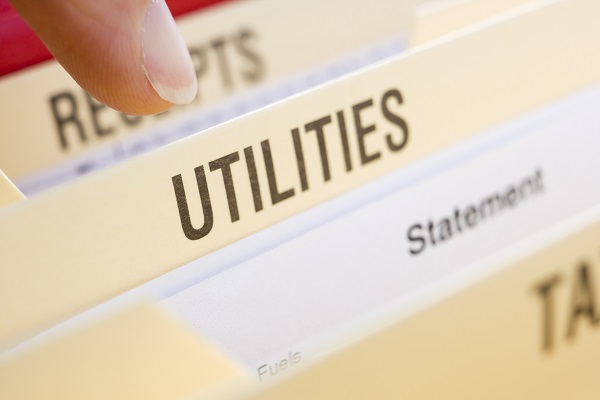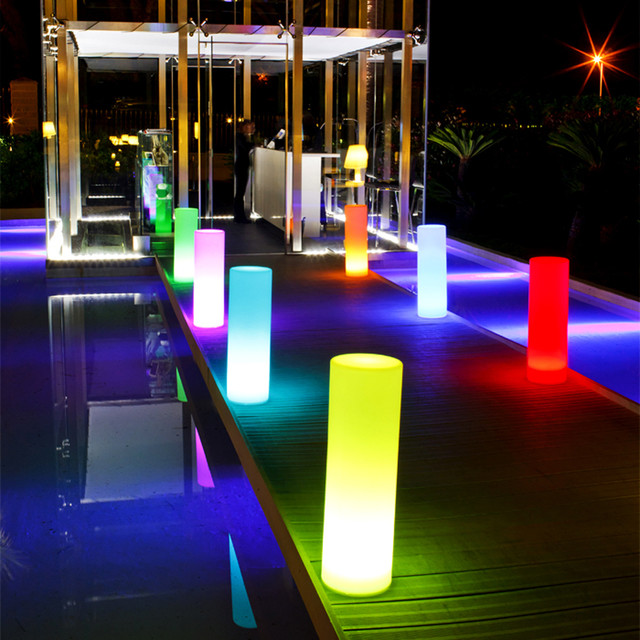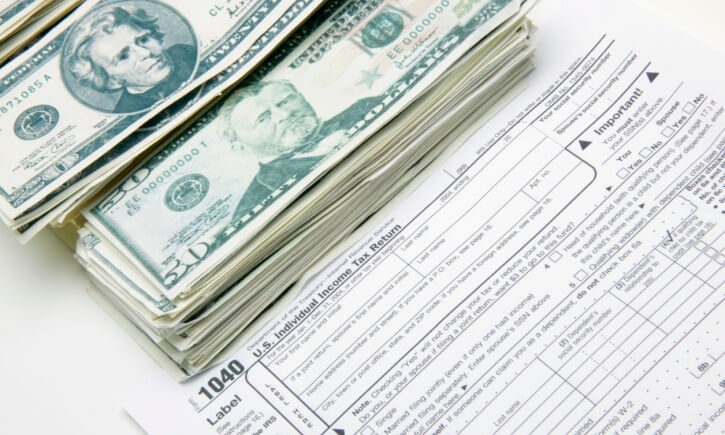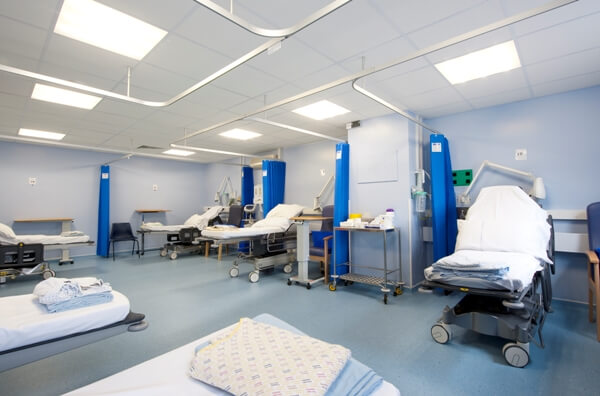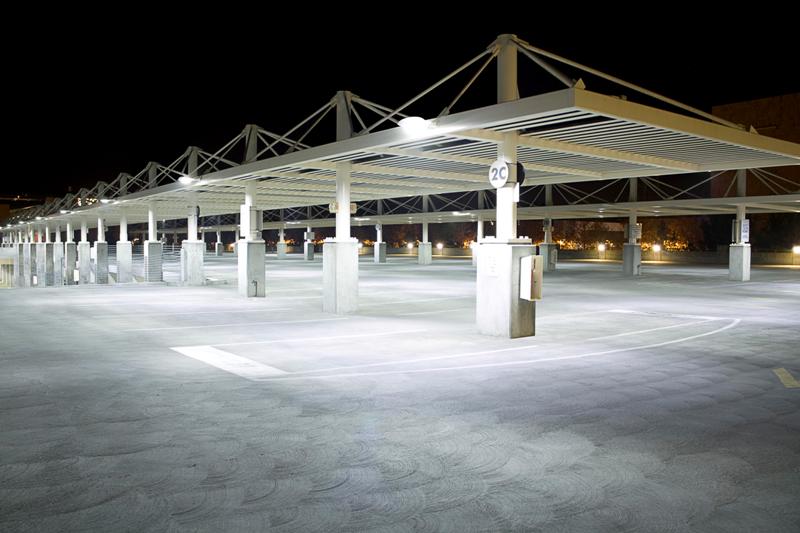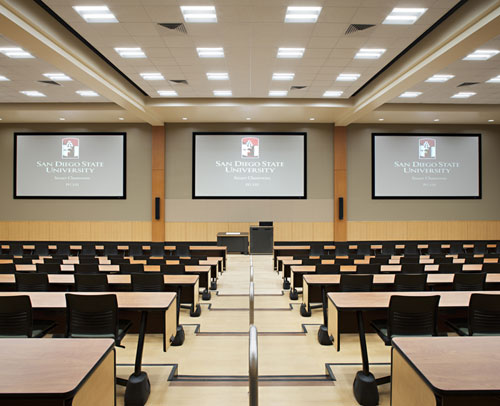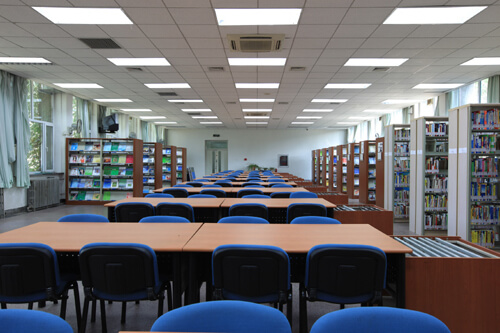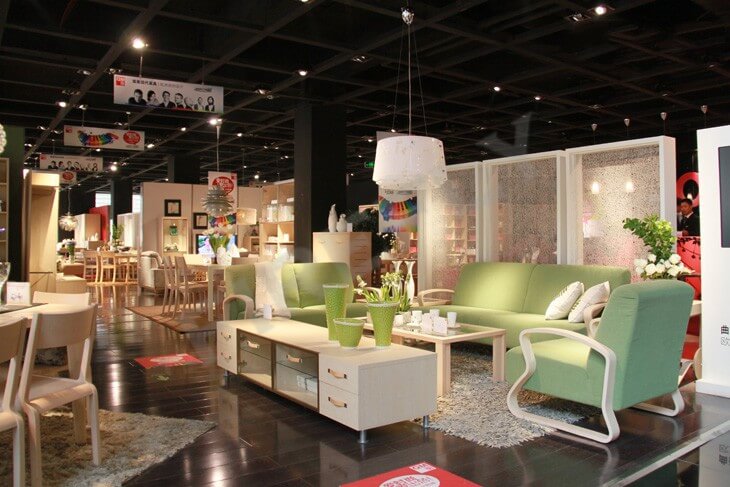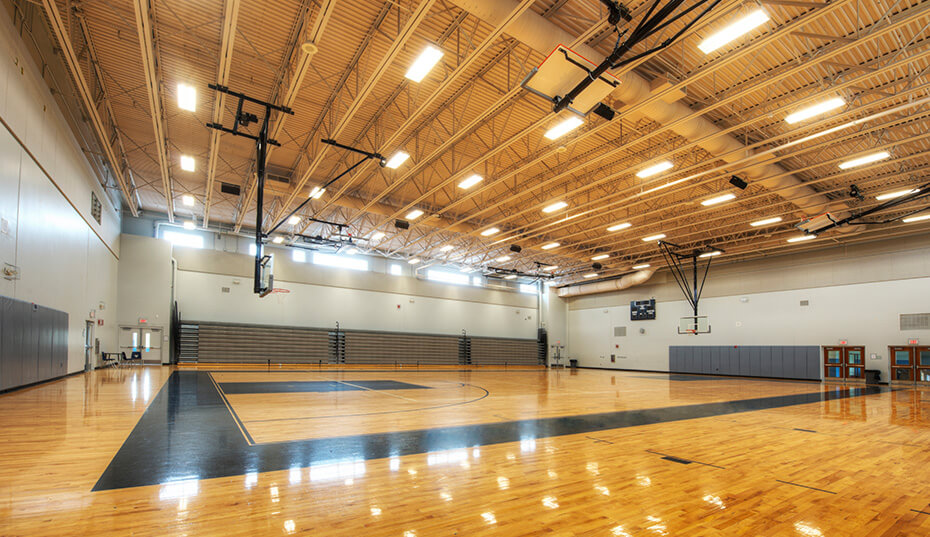LED commercial lighting retrofits across the country continue to produce savings, offer truer, whiter light, and reduce long-term labor costs.
Continue readingControl Options Boost Interest in LED Lighting
Building and property managers who are serious about tackling the challenge of reducing energy costs have another reason to consider employing LED lighting in their plans.
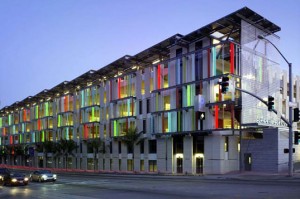 A recent report from Pike Research says the growing move to LED lighting is fueling a drive by controls manufacturers to develop more innovative and sophisticated digital controls that will boost the energy savings potential of these systems.
A recent report from Pike Research says the growing move to LED lighting is fueling a drive by controls manufacturers to develop more innovative and sophisticated digital controls that will boost the energy savings potential of these systems.
These intelligent lighting systems are a growing market segment.
A summary of the report includes this observation:
“New technologies emerging in recent years have enabled a wide range of innovative strategies, from room-level intelligence of occupancy and daylight sensing to building-wide coordination of a fully networked system.”
The key to implementing any of these advanced technologies is LED lighting which is easily adaptable to digital controls.
The potential for expanding and enhancing the cost savings associated with incorporating LED lighting is one more reason to consider these energy savings options.
The use of LED lights has been a growing segment of the market and as costs have fallen even more building operators have chosen this option. LED has become one the hottest trends in retrofitting projects because of its energy cost savings.
Building managers looking to control energy costs, improve lighting efficiency and gain better control of energy use should consider LED lighting in their planning. LED lights can be incorpoprated for indoor and outdoor lighting needs.
If you want to learn more about LED lighting and how it can help you regain control of your energy usage, contact us.
Take Advantage Of Section 179d Tax Deducations
There’s still plenty of time to take advantage of the Section 179d tax deductions available to commercial enterprises that convert over to LED lighting. The new lighting must go into service by the end of 2013 to qualify for this generous federal tax deduction.
Continue readingHospital Lighting Improvements Cut Facility Expenditures
As healthcare costs continue to skyrocket, hospitals are scrambling to cut expenses in the day-to-day operation of their facilities.
Continue readingParking Garage Lighting Retrofitted In Palatine
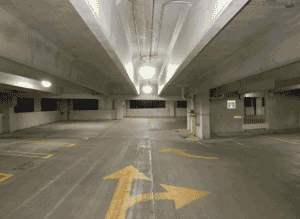 The city of Palatine, IL had to meet stringent requirements to be considered for a federal grant that allowed a city-operated four level garage to be retrofitted with LED lighting. The grant, delivered through the Department of Commerce & Economic Opportunity Grant Program, required a return on investment (ROI) of no more than seven years.
The city of Palatine, IL had to meet stringent requirements to be considered for a federal grant that allowed a city-operated four level garage to be retrofitted with LED lighting. The grant, delivered through the Department of Commerce & Economic Opportunity Grant Program, required a return on investment (ROI) of no more than seven years.
Success resulted in part from ‘due diligence’ studies conducted by DPW Director M. Berry. More than cost savings resulted. Tests of various luminares sought even, glare-free illumination. Various luminaires were installed at the garage, and customer input was solicited. Customers often noticed the absence of dark spots with the use of LED lighting. Color temperature was also considered, with the nod going eventually going to a 6000 K cool white LED.
Ultimately, the 451 existing metal halide fixtures were replaced at the Gateway Center Parking Garage in Palatine. The new LED luminares are rated at 70,000 hours, thus reducing maintenance costs in the parking structure. The LEDs are 90W, replacing 232W lighting. The new lighting in the parking garage offers the added advantage of better maintaining both color and illumination over the life of the LED. The flatter lumen depreciation curve is important to maintaining required illumination levels for such a structure.
The advantages continue. This retrofitted public parking garage helps Palatine to meet LEED requirements for lighting efficiency. The high resistance to temperature changes and vibrations has further added to the efficacy of LED parking garage lighting.
Contact us at Relumination to calculate the savings potential for your project.
Less Fatigue with LED Lighting
 Fluorescent lighting uses a combination of gasses and electricity to light up. Under normal circumstances, that combination of gasses and electricity would continue to grow brighter and brighter, but modern florescent lights use a device called a “ballast” to regulate the intensity of light coming off of the bulb. However, when electricity amounts fluctuate, that same ballast can flip your florescent light on and off very quickly, creating an almost imperceptible strobe effect. This, coupled with the fact that most florescent lighting is too bright for most workstations, adds up to be one major headache. Literally.
Fluorescent lighting uses a combination of gasses and electricity to light up. Under normal circumstances, that combination of gasses and electricity would continue to grow brighter and brighter, but modern florescent lights use a device called a “ballast” to regulate the intensity of light coming off of the bulb. However, when electricity amounts fluctuate, that same ballast can flip your florescent light on and off very quickly, creating an almost imperceptible strobe effect. This, coupled with the fact that most florescent lighting is too bright for most workstations, adds up to be one major headache. Literally.
Even if you cannot perceive the flicker, your brain can still process it. Like subliminal messaging, the flash of light is there and gone before you can recognize it, but the message still gets through. This repeated strobbing of the light can cause headaches, eyes strain and other stress and fatigue inducing symptoms as your body tries to manage the sudden change in lighting. It can elicit changes in mood or contribute to that down-in-the-dumps feeling you get towards the end of the day.
One of the major factors that florescent strobe can play into is sore or strained eyes. Your eyes and brain have to focus and refocus or work extra hard to keep your pupil appropriately dilated for the changing light conditions.
LED Lighting does not use the same method of creating light, instead using the movement of electrons through a semi-conductor material, not a filament like traditional light bulbs (which can burn out) or through a gas like florescent lighting. This means that LED Lighting doesn’t need a ballast, and won’t flicker on and off like a florescent light, meaning no mini-strobe and no headaches.
If you are interested in LED Lighting alternatives for your home, office or school, contact us soon!
Energy Efficiency Incentives
 U.S. Federal and state governments offer many rebates for becoming energy efficient. Both corporations and individuals can benefit from energy-efficiency incentives. The U.S. Department of Energy has created DSIRE, which stands for Database of State Incentives for Renewables and Efficiency. It’s an easy to use widget designed for users to search for applicable federal and state incentives.
U.S. Federal and state governments offer many rebates for becoming energy efficient. Both corporations and individuals can benefit from energy-efficiency incentives. The U.S. Department of Energy has created DSIRE, which stands for Database of State Incentives for Renewables and Efficiency. It’s an easy to use widget designed for users to search for applicable federal and state incentives.
According to the U.S. Department of Energy, corporations can benefit at the federal level in four ways:
Federal Corporate Tax deductions
The Energy-Efficient Commercial Buildings Tax Deduction is a corporate deduction worth up to $1.80 per square foot available to owners of new or existing buildings who install qualifying interior lighting.
Federal Corporate Depreciation
Solar hybrid lighting technologies installed through 2012 may qualify for MACRS and bonus depreciation.
Federal Corporate Tax exemptions
According to Section 136 of the U.S. Code, energy conservation subsidies provided directly or indirectly to customers by public utilities are non-taxable.
Federal Corporate Tax credits
Solar hybrid lighting may qualify for the Business Energy Investment Tax Credit (ITC).
In addition to the tax incentives listed above, businesses should also investigate federal grant and loan programs like the following:
Federal Grant Program
- Tribal Energy Program Grant
- USDA – High Energy Cost Grant Program
- USDA – Repowering Assitance Biorefinery Program
- USDA – Rural Energy for America Program (REAP) Grants
Federal Loan Program
- Clean Renewable Energy Bonds (CREBs)
- Energy-Efficient Mortgages
- Qualified Energy Conservation Bonds (QECBs)
- U.S. Department of Energy – Loan Guarantee Program
- USDA – Biorefinery Assistance Program
- USDA – Rural Energy for America Program (REAP) Loan Guarantees
Contact us today for help in planning energy-efficient lighting solutions. We’ll work with you to reduce your energy costs and we’ll even process your utility rebates for you. For more information on federal and state specific tax incentives, visit DSIRE.
Changing University Lighting Means Huge Cost Savings
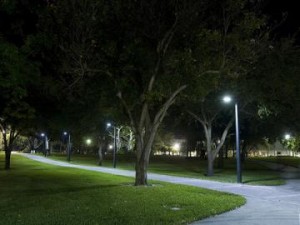 University lighting methods are a topic of discussion as colleges across the US are finding out that reducing their energy consumption by switching to LED and fluorescent lighting technologies will have a huge impact on their utility bills.
University lighting methods are a topic of discussion as colleges across the US are finding out that reducing their energy consumption by switching to LED and fluorescent lighting technologies will have a huge impact on their utility bills.
Baylor University in Texas is hiring an intern this fall to figure out exactly how to proceed on their journey to cost savings eco-conscious lighting for their campus. LED lights are already in use on the walkway leading from Pat Neff to the Baylor statue.
Baylor is currently spending in excess of $9.5 million a year to light up their campus. They dispose of more than 25,000 light bulbs a year. They estimate their savings will be at least 50 percent. LED’s are more expensive up front, but if you factor in the savings over the life span of the bulb, the overall cost savings is impressive.
Temple University in Pennsylvania just announced a conservation plan that will drastically cut their energy bills. They plan to reduce their energy use by 25 percent over the next two years. A change in the way they light up their campus is in the plan. The University and Temple University Hospital paid $36.8 million for utilities in 2012.
The University of Michigan-Flint is replacing more campus lighting with LED lights and is looking for a 50% cost saving benefit and a reduced need for maintenance in the process. The new lights are dark-sky compliant. The light shines down, reducing light pollution. The actual cost savings for lighting McKinnon Plaza is $6,000 per year and another $18,000 per year for the UPAV parking ramp. Replacing the lights in the library is part of the overall plan and that will ad another $22,000 in savings.
20% of the energy in the world is used for lighting. To find out how you can reduce your consumption and your utility bills, please contact us.
Relumination LED Lighting Enhances Parnian Exquisite Furnishings Showroom for Better Customer Experience
PHOENIX, AZ–(Marketwire – Oct 10, 2012) – Relumination, a leading provider of LED lighting solutions for businesses, helped Parnian significantly reduce energy use and provide a better shopping experience for the affluent clientele visiting the 15,000 square foot unique showroom filled with high end contemporary furniture and artwork.
Relumination provided a turn-key solution of LED lighting products, installation and utility rebate administration. Relumination replaced all the halogen and incandescent showroom lighting, including main showroom downlights, spotlights and decorative lamps.
The new LED lighting installed by Relumination allows buyers the ability to better distinguish the details of Parnian’s hand-crafted contemporary furniture and artwork. The LED lights emit a pure white light, improving the customer’s ability to differentiate variations of colors and the fine points of furnishings Parnian creates and imports from around the world. The established prominent retailer and manufacturer also benefits from significant savings in energy use and costs with the new LED lighting.
“It is core to our family business that we provide the highest quality of home and executive office furnishings to our valued customers, while we also do more to help reduce our carbon footprint in the 21st century,” said Leila Parnian, vice president of Parnian. “We have integrated our beautiful showroom experience with energy efficient LED lighting along with Arizona’s first offering of LEED Certified environmental high end furnishings made of bamboo, old barn wood, refurbished woods and recycled metals.”
Leila Parnian, who graduated from Arizona State University in 2009 with a Masters in Urban and Environmental Planning, is using her education in sustainable development by finding ways to eliminate waste at the family-owned business. “We have reduced our electric bill by nearly 50% because of the new high-quality lighting, which also reduced our use of air conditioning,” said Leila.
“The amount of lights used in the luxurious showroom was wasting energy and generating tremendous amounts of heat,” said Daniel Henderson, CEO of Relumination. “We were able to replace all the current fixtures with LED lamps that provide a superior quality of light, reduce the temperature of the showroom and significantly reduce the maintenance of lighting at the showroom. We calculated a return on investment for the upgrade at 100% in less than nine months.”
Parnian, an internationally recognized furniture showroom and manufacturer, was founded in 1977 by Architects Abdolhay and Parvaneh Parnian. The Arizona family-business was passed to second generation, Ali Parnian and Leila Parnian, who continue the tradition of marketing quality furnishings from around the world, along with their father’s designed furniture, Leila’s artwork and now environmentally friendly creations represented with exquisite ambience in their architecturally renowned showroom.
About Relumination — Relumination, LLC is a lighting technologies solutions company that helps customers reduce energy costs, save electricity, minimize facilities management expenses and decrease their environmental footprint. We provide reliable and sustainable LED products and services that exceed quality standards of reducing energy consumption by up to 90%. Our valued customers are in various industries from manufacturing to retail. The company is privately held and headquartered in Arizona. www.relumination.com
About Parnian — Parnian Furniture, an award-winning furniture store and manufacturer, was started in 1977 by Abdolhay and Parvaneh Parnian and continues to be family owned and operated by Leila Parnian. Parnian specializes in high end modern and contemporary furniture. In addition to the over 100 product lines of furniture and accessories that are imported, Parnian also has a custom design and production studio in Phoenix, Arizona in which they design and create custom hand crafted furniture for the home and office using old world craftsmanship for the most discriminating of clientele. Services include full interior design, custom furniture design, kitchen design, office design and manufacturing, special ordering of furniture, rugs, accessories, lighting and art. Although their headquarters and 15,000 square foot showroom is located in Scottsdale, Arizona, Parnian receives international orders and ships to their clients all over the world. www.parnian.com
No-Heat LEDs Keep Energy and A/C Costs Low at Fitness Centers
When customers are looking for a gym to join, they look for a place that is clean, well-lit, feels comfortable inside and has reasonable prices. It’s uncomfortable to work out in a warm, humid gym. A general manager of the Bristol Marriott Hotel in the United Kingdom had that exact problem. According to a case study by Greenled, the general manager complained his head was getting warm when he worked out and needed to find a solution to cool down the hotel’s fitness center.
Continue reading
